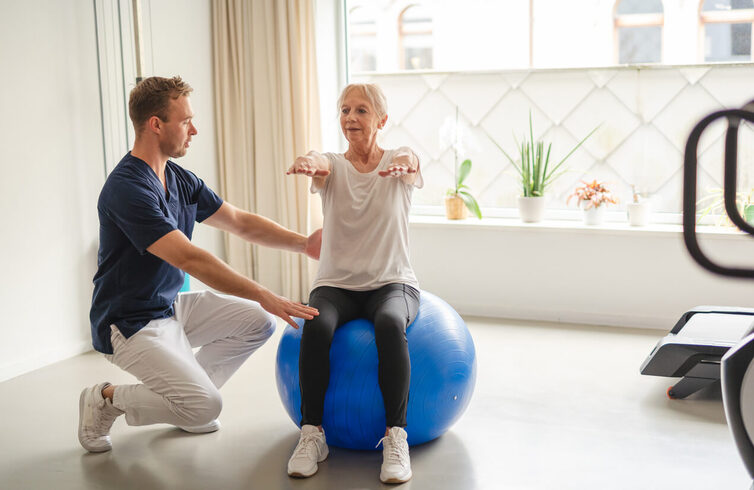Life After Diagnosis: How Movement Aids Cancer Recovery

Receiving a cancer diagnosis often marks the start of a challenging journey filled with medical jargon, treatment decisions, and significant physical and emotional hurdles. But what happens once treatment begins—or even after it ends? Increasingly, research highlights one crucial yet often overlooked form of support: movement.
Exercise might not be the first thing that springs to mind during cancer treatment, but growing evidence confirms its role as a cornerstone of recovery. When carefully tailored and professionally guided, movement can help individuals regain strength, boost energy, and restore a sense of independence. The outcome? Improved physical health, emotional resilience, and enhanced long-term wellbeing.
The Importance of Exercise in Cancer Recovery
Cancer and its treatments often bring a host of side effects, including fatigue, muscle loss, weight fluctuations, reduced bone density, and weakened immune function. Many also experience heightened anxiety, depression, or cognitive challenges. A well-designed exercise programme can address these issues in a safe, holistic, and personalised way.
According to Macmillan Cancer Support, those who remain physically active during and after treatment report fewer side effects, reduced fatigue, and a better quality of life. In some cases, regular movement may even lower the risk of cancer recurrence. However, this isn’t about returning to the gym as if nothing has changed—it’s about engaging in movement that respects the body’s new needs and limitations.
What Is Cancer Rehabilitation?
Cancer rehabilitation, also known as oncology exercise support, involves evidence-based physical activity programmes designed to help individuals manage the effects of cancer and its treatment. These programmes are typically led by qualified professionals, such as Clinical Exercise Physiologists, who specialise in adapting movement for complex medical conditions.
A personalised cancer rehabilitation plan might include:
- Gentle cardiovascular exercises to rebuild stamina
- Resistance training to counteract muscle loss and support bone health
- Balance and mobility exercises to reduce the risk of falls
- Breathing and relaxation techniques to promote mental wellbeing
All of this is done in close collaboration with the individual’s medical team, ensuring the programme complements their treatment and adapts to their changing needs.
If you’re considering cancer rehabilitation for yourself or a loved one, it’s essential to seek guidance from professionals who understand both the science of exercise and the complexities of cancer care.
Why Rest Alone Isn’t Always the Answer
It’s entirely natural to feel that rest is the best option during treatment, but complete inactivity can actually worsen fatigue. Without movement, a cycle of low energy, poor mood, and muscle deconditioning can quickly take hold.
The encouraging news? Even small, manageable amounts of movement—when prescribed by an experienced clinician—can break this cycle. Many cancer rehabilitation clients report better sleep, improved mood, and a stronger sense of self once they begin exercising regularly.
Physical and Emotional Benefits
Exercise doesn’t just benefit the body; it can be a lifeline for the mind. A cancer diagnosis can leave individuals feeling disconnected from their sense of identity, particularly if they’ve always been active, strong, or independent.
By reintroducing movement in a way that feels safe and empowering, oncology exercise programmes help people reconnect with their bodies. This can be a powerful antidote to the fear and vulnerability that often accompany illness. It also provides a sense of routine and control during a time when much may feel uncertain.
The Value of a Tailored Approach
Every cancer journey is unique, and exercise support should reflect that. A good rehabilitation programme will take into account:
- The type and stage of cancer
- Treatment history, such as chemotherapy, radiotherapy, or surgery
- Current side effects and symptoms
- Physical limitations or pre-existing conditions
- Mental wellbeing and motivation
Rather than following a one-size-fits-all approach, oncology-trained professionals customise each session to the individual’s evolving needs. This might involve starting with seated exercises, progressing to walking-based activities, or incorporating resistance bands for strength.
The aim isn’t to “push through” but to listen to the body and use movement as a tool for healing.
Who Provides Cancer Rehabilitation?
Cancer rehabilitation should always be delivered by practitioners with the appropriate clinical expertise. Clinical Exercise Physiologists, in particular, are highly trained to work with individuals managing chronic and complex health conditions. They understand the physiological effects of cancer treatment and how to prescribe exercise safely—whether someone is undergoing chemotherapy, in remission, or dealing with ongoing side effects.
What to Expect from a Cancer Rehabilitation Programme
If you choose to pursue cancer rehabilitation, you can expect a personalised assessment followed by a tailored exercise plan. Sessions may be one-to-one or in small groups, depending on your preferences and comfort level. The environment should be supportive, inclusive, and adaptable to your energy levels on any given day.
For oncology exercise support that is compassionate, collaborative, and grounded in clinical expertise, Longevity Health & Fitness offers exactly that. Their cancer rehabilitation services are delivered by experienced professionals who guide individuals through one of life’s most vulnerable yet transformative chapters.
Movement is more than just medicine—it’s a way to reclaim your life.
Discover more about personalised clinical support and how Longevity Health & Fitness can assist you on your recovery journey.